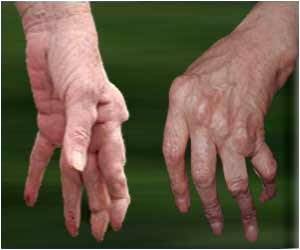Dutch art collector Ferdinand Bertholet, has some ancient paintings of fornicating Chinese couples and phalluses made of stone in his collection.

In one painting, two women share a very intimate moment with a phallus, while other items at the "Gardens of Pleasure" exhibition organised by Sotheby's includes penis shaped objects made from stone, ceramics and bronze.
Bertholet, whose collection of Chinese erotic art is the world's largest with around 500 pieces, told AFP that such explicitness should not be considered crude or pornographic, instead representing harmony with the Taoist philosophy that thrived in China before the communists took power and the chaos of the Cultural Revolution.
"Chinese art is so different in its expression than other erotic expressions because it has a philosophical background," said the 61-year-old, adding that Taoism sees sex as a path to happiness and longevity.
Many paintings are set in gardens, representing the Taoist aspect of being at one with nature, the collector said.
"(Sex) was a main issue for the Chinese... but it's after the Cultural Revolution that it is completely lost," Bertholet said, describing the issue to still be "incredibly sensitive".
- Anti-sexual revolution -
Vast numbers of relics, buildings and examples of heritage were destroyed at the hands of the communist authorities during the Cultural Revolution, China's decade of political and cultural upheaval from 1966 to 1976.
Temples and churches belonging to all religions -- including those for the ancient Chinese philosophies of Taoism and Confucianism -- were targeted amid a suppression of religion.
Sexual expression was not tolerated, with men and women wearing gender-neutral clothing during the period.
Today sexual taboos are loosening in the once deeply conservative country, as an adventurous generation of young, mainly urban Chinese adopt attitudes far removed from the days of radical communist rule their parents lived under.
"Maybe this exhibition will help so that especially the Chinese people will recognise the philosophy of their own past," Bertholet said.
However, the portrayal of sex is still very sensitive in mainland China and it would be difficult to hold a similar exhibition in the country, due to its strict pornography laws, Sotheby's Asia chief executive officer Kevin Ching told AFP.
"Authorities might focus on the erotic part rather than the art part," Ching said.
But Ching believes this will change as affluence grows.
"As China becomes more prosperous and as it opens up to the rest of the world, Chinese people now have a bigger chance to be in touch with all things that were lost."
- 'I was flabbergasted' -
Bertholet became fascinated by Chinese erotic art when he saw a collection of paintings as an art student in Holland.
"I was flabbergasted because of its beauty, because of the harmony," Bertholet said, adding that the works inspired his own paintings.
He purchased his first piece in Hong Kong in the 1970s, sparking a quest that led him to major cities in Europe and in the US, amassing a collection that has been exhibited in major international galleries including the Barbican in London and the Cernuschi Museum in Paris, among others.
"I wanted to share my passion... to have other people appreciate this kind of art," he said.
Other pieces showcased at the Sotheby's exhibition, which runs through May 3, include a set of seven small porcelain figures depicting couples happily having sex.
The highlight of the exhibition, where works were not for sale, was a set of eight erotic paintings commissioned by the Kangxi Emperor during the Qing Dynasty.
"This is probably the first time we've held an exhibition of Chinese erotic art of this quality and variety in Hong Kong," Ching said.
The boom in Hong Kong's international art market has been driven partly by the fast-growing wealth of mainland Chinese buyers.
More than 3,000 international artists from 245 of the world's leading galleries were displayed in the first instalment of Art Basel in the city last year.
Source-AFP











